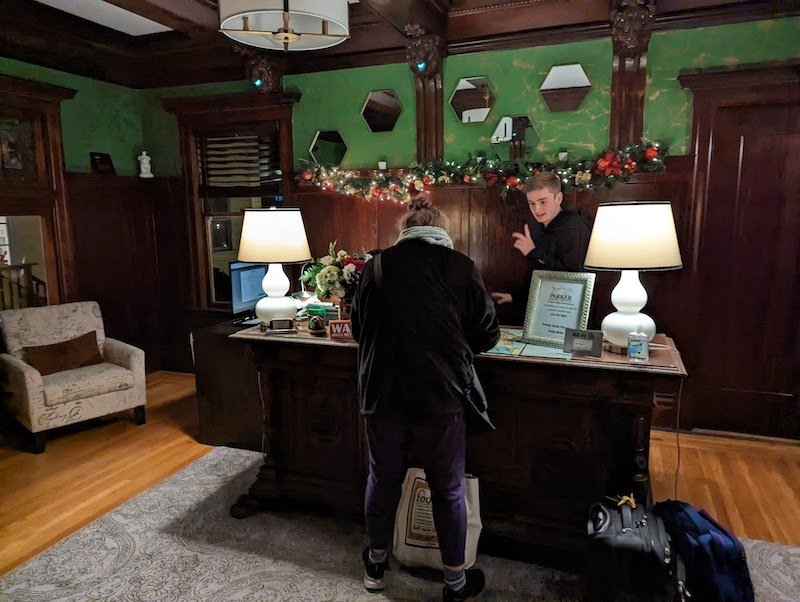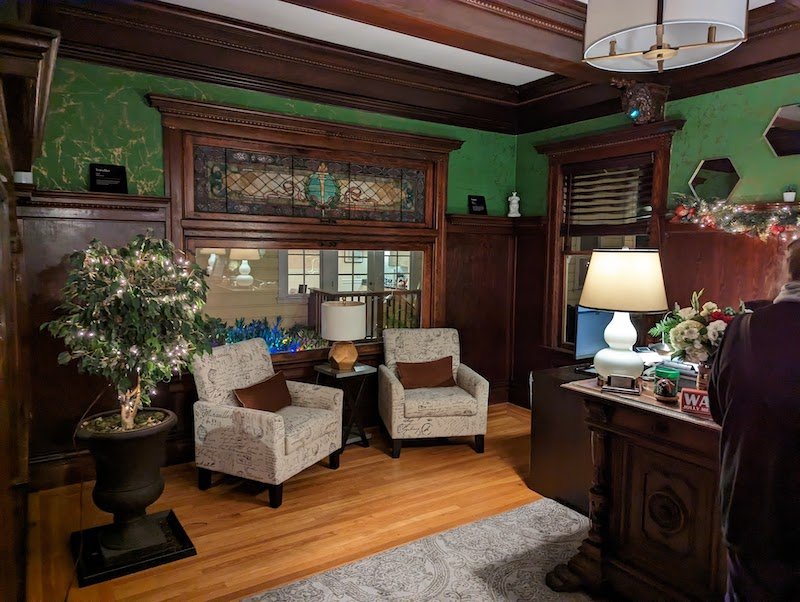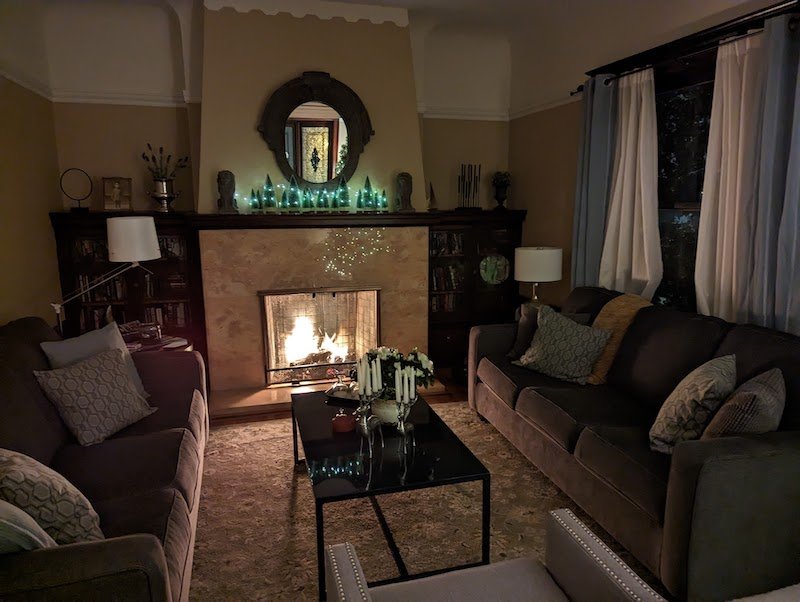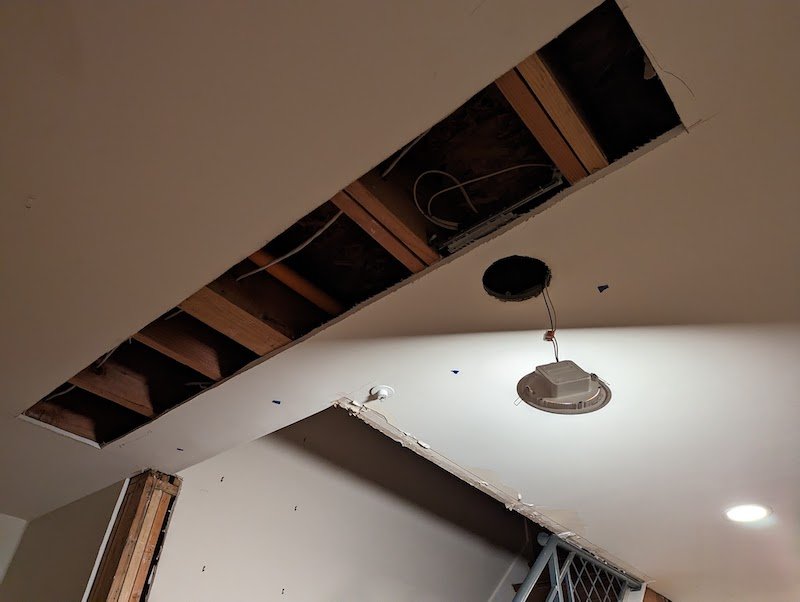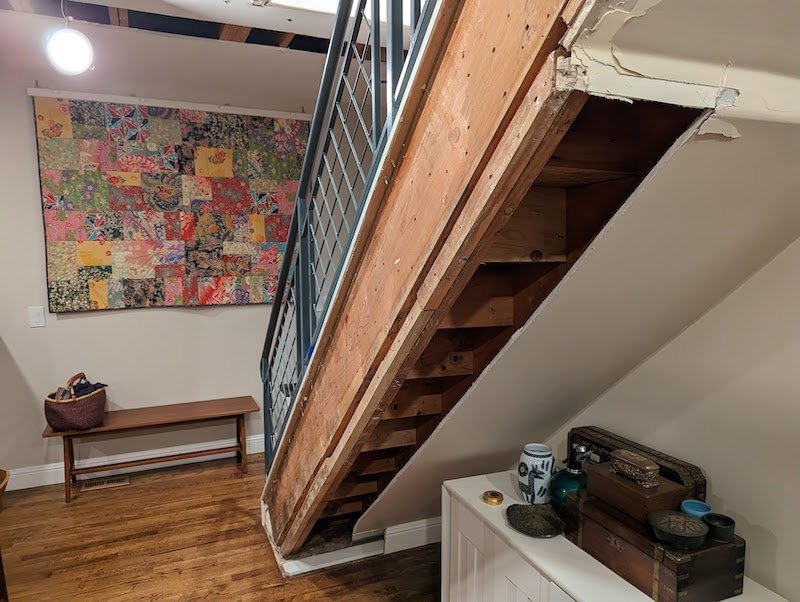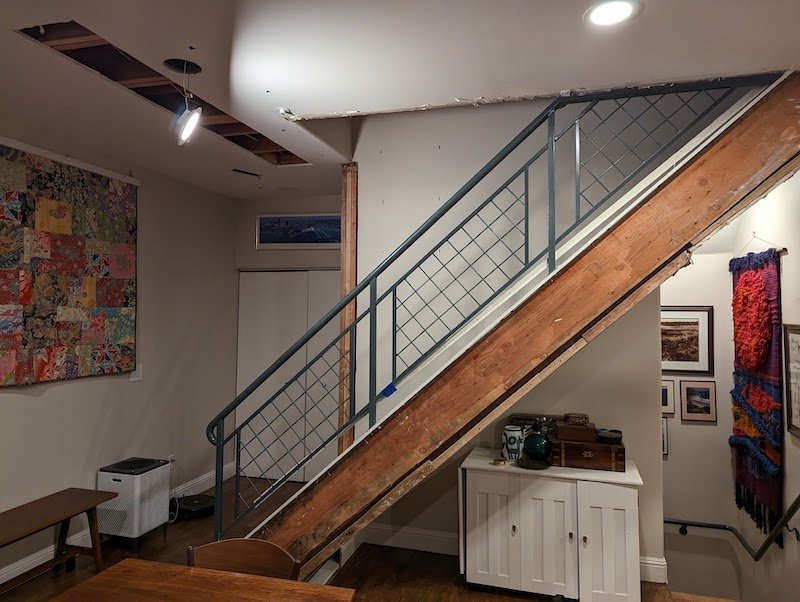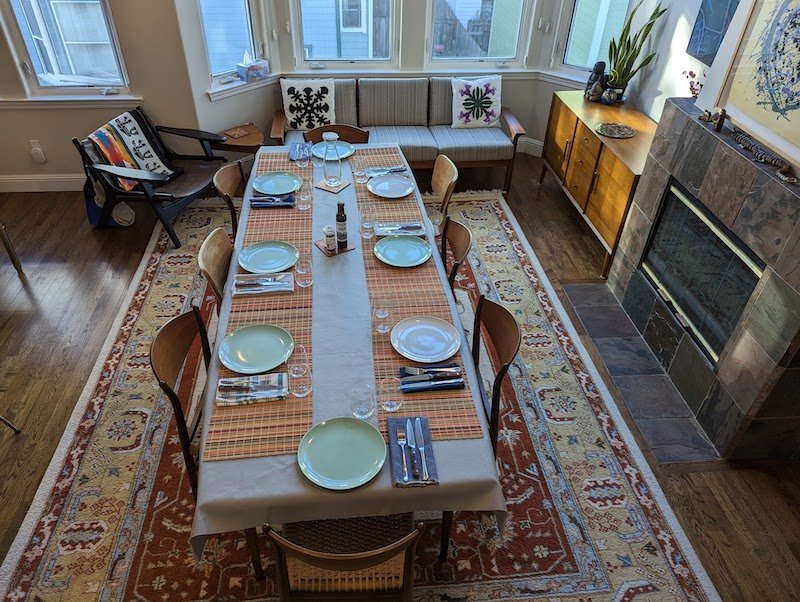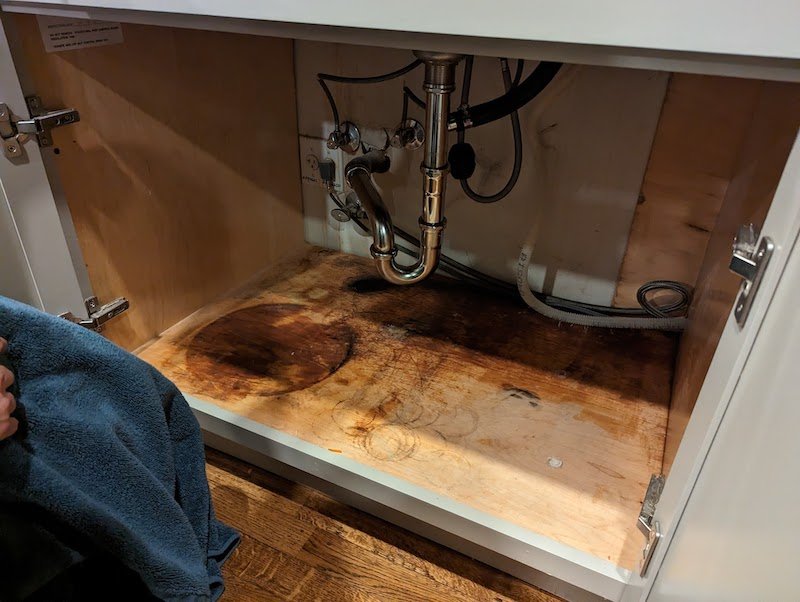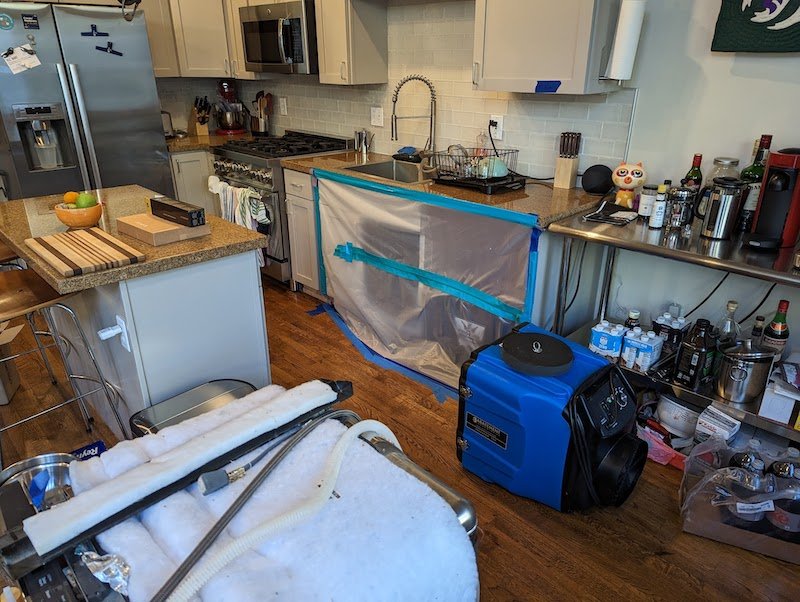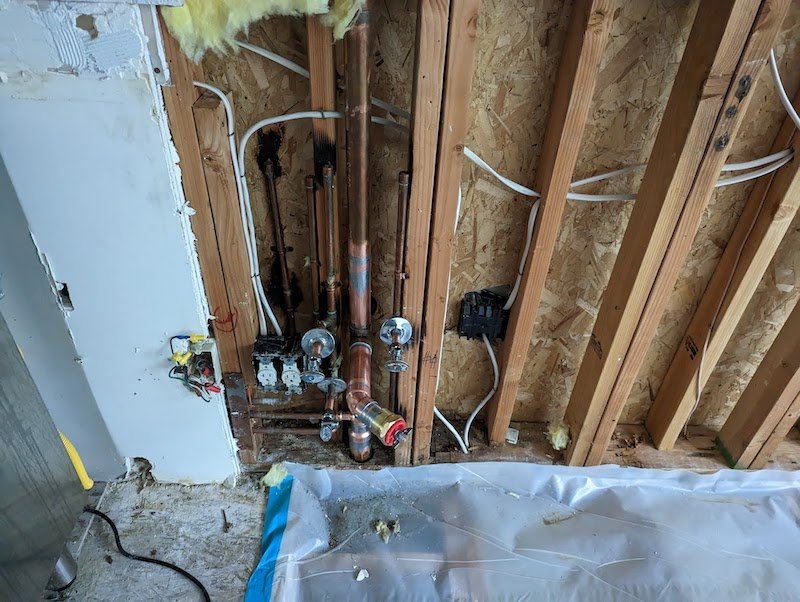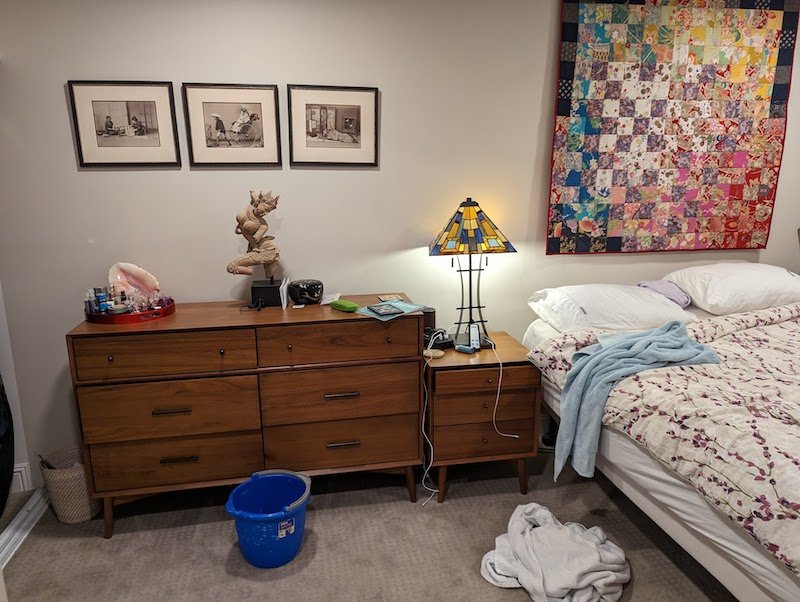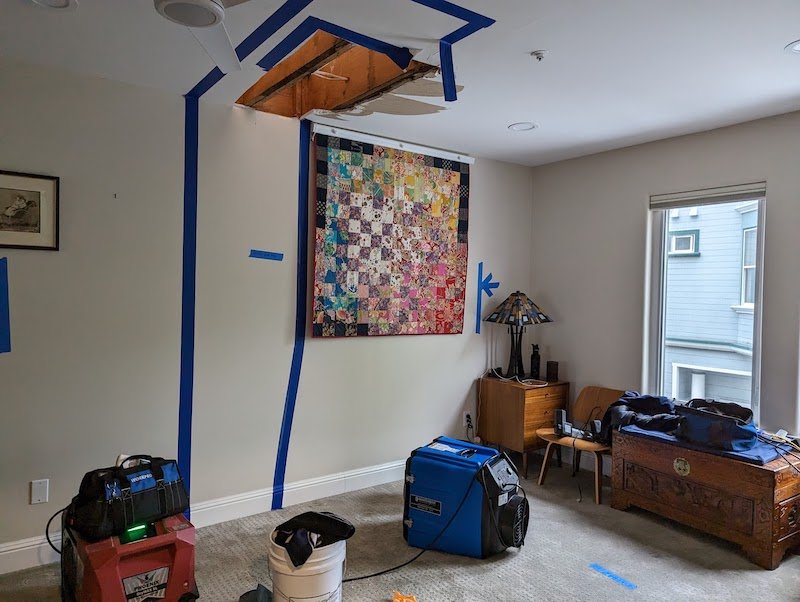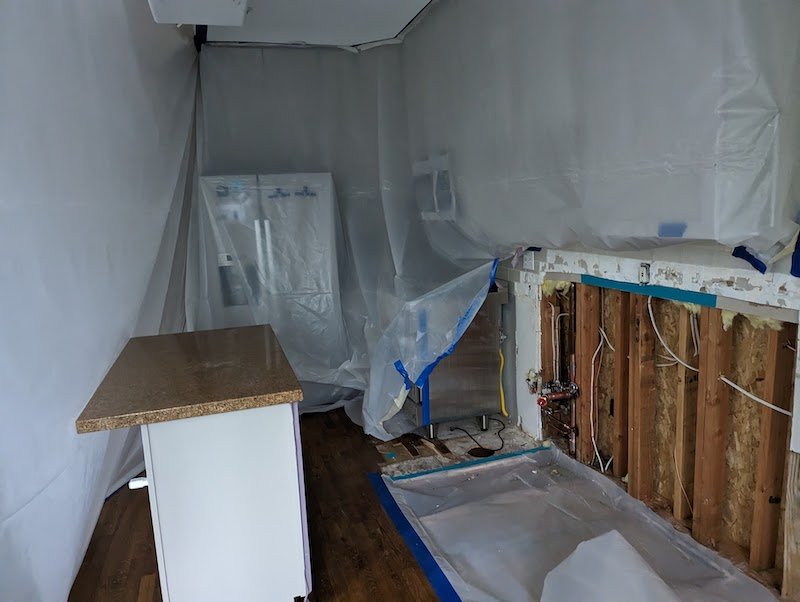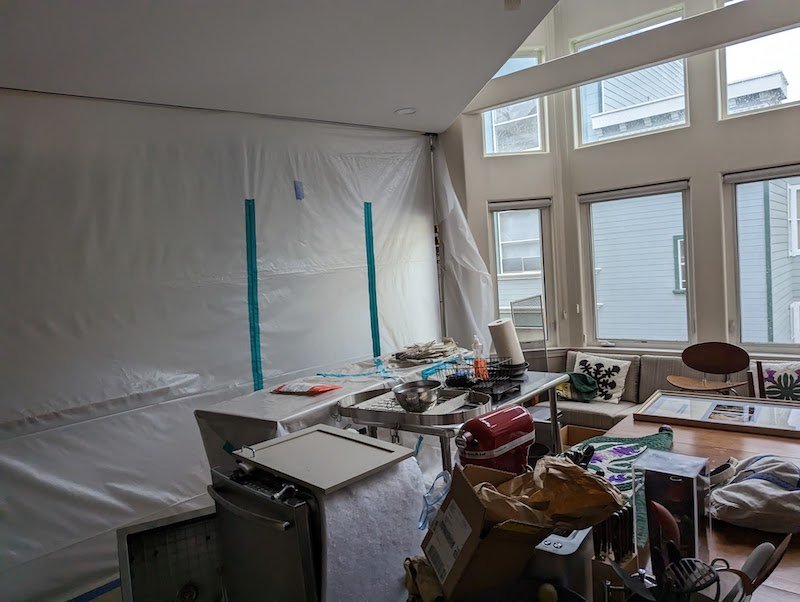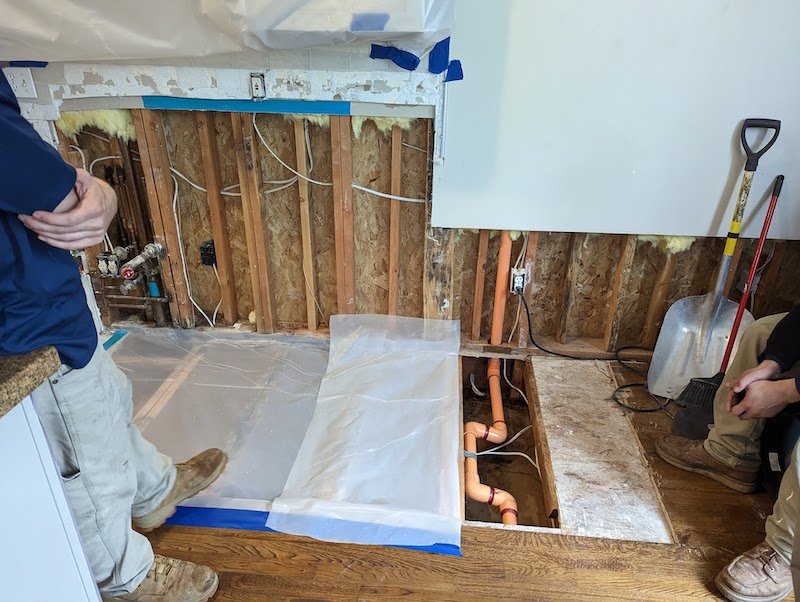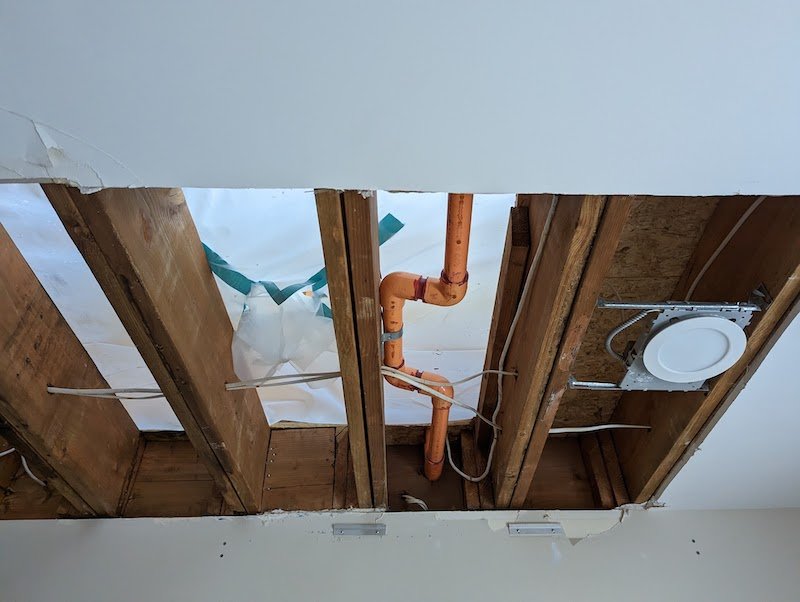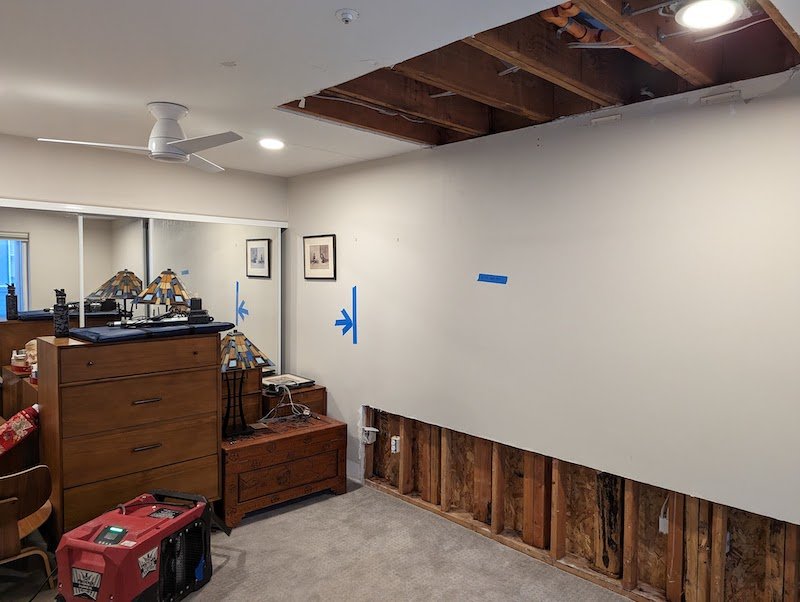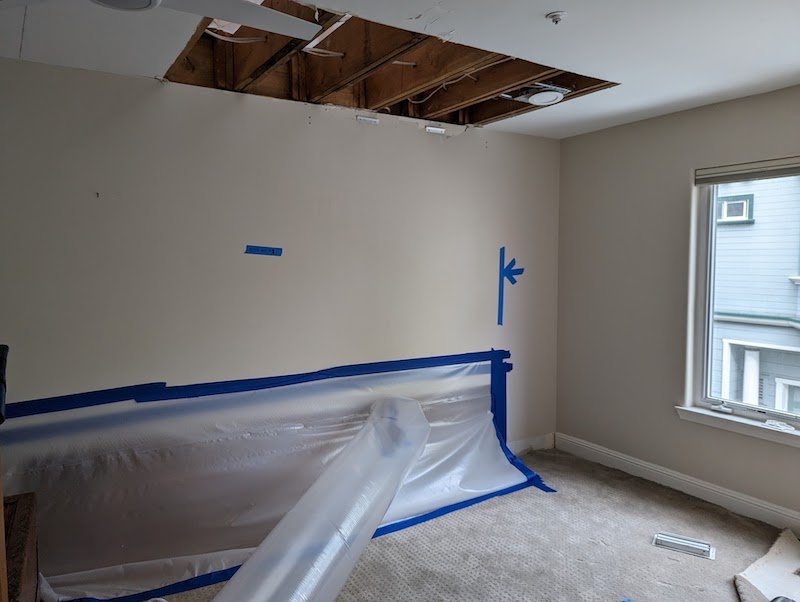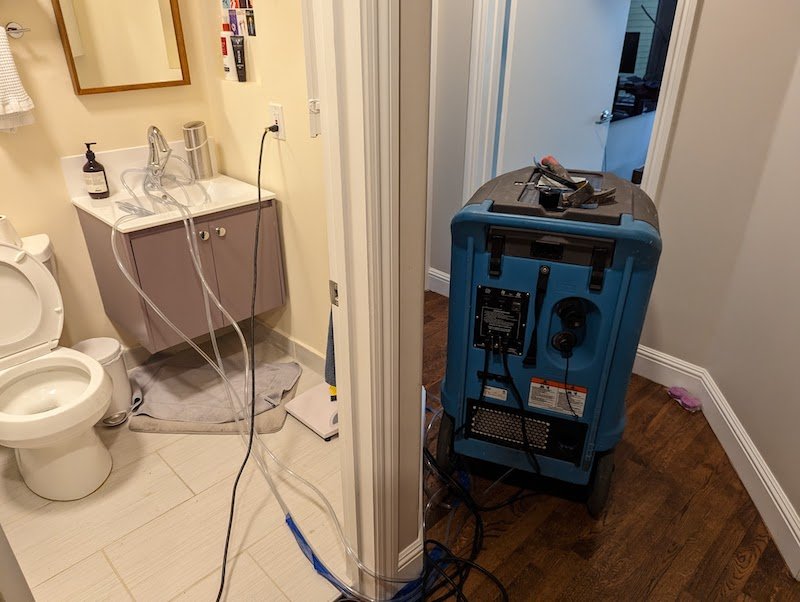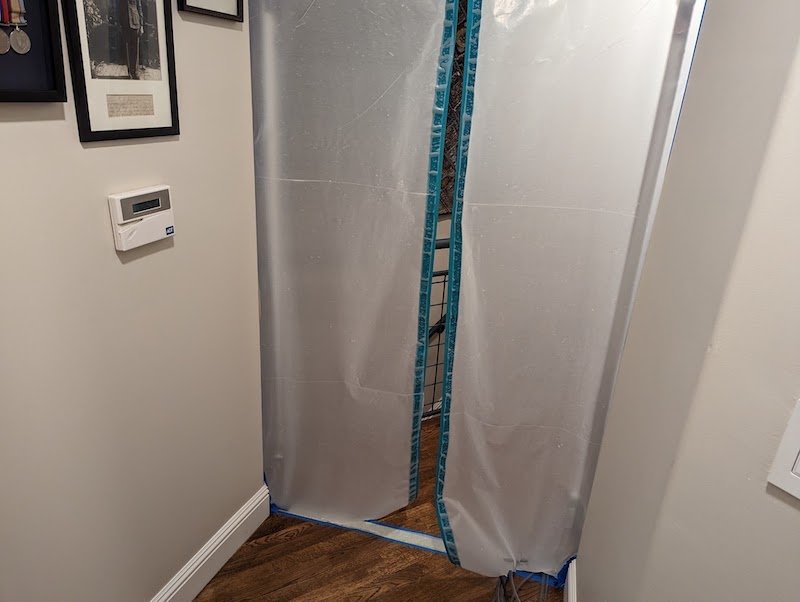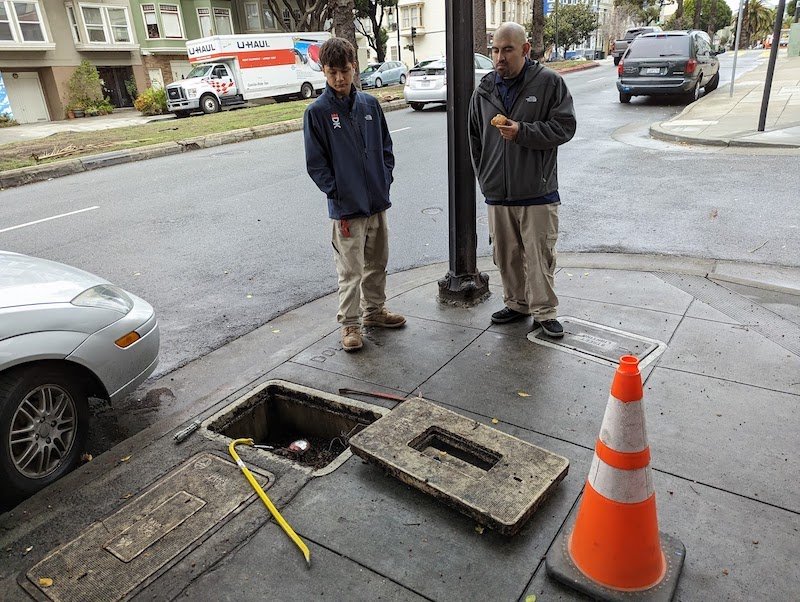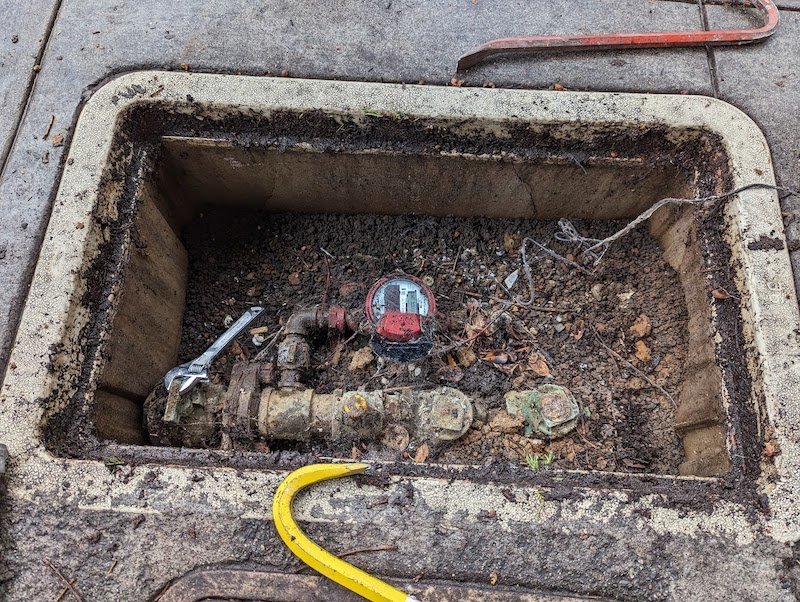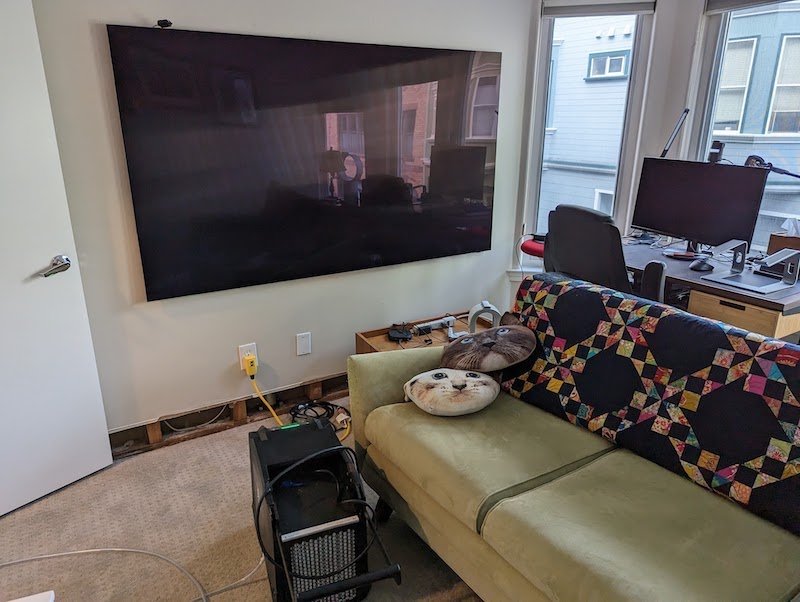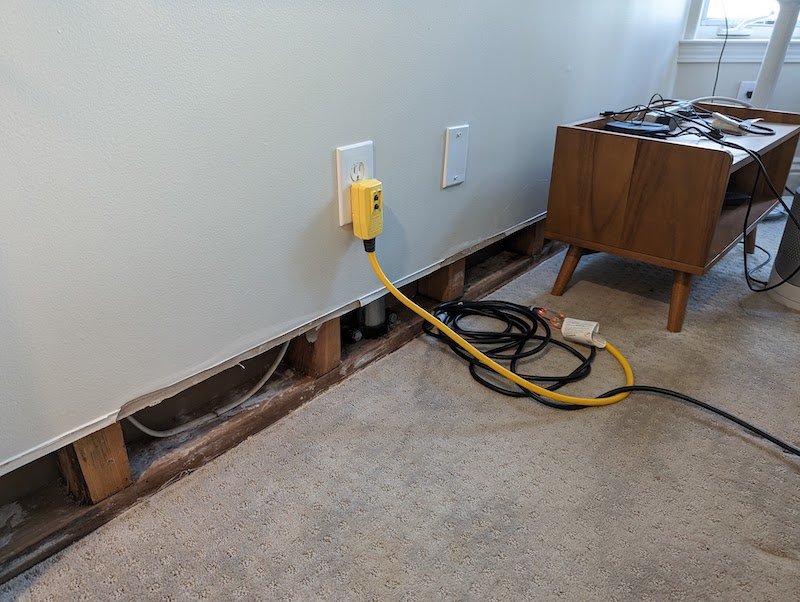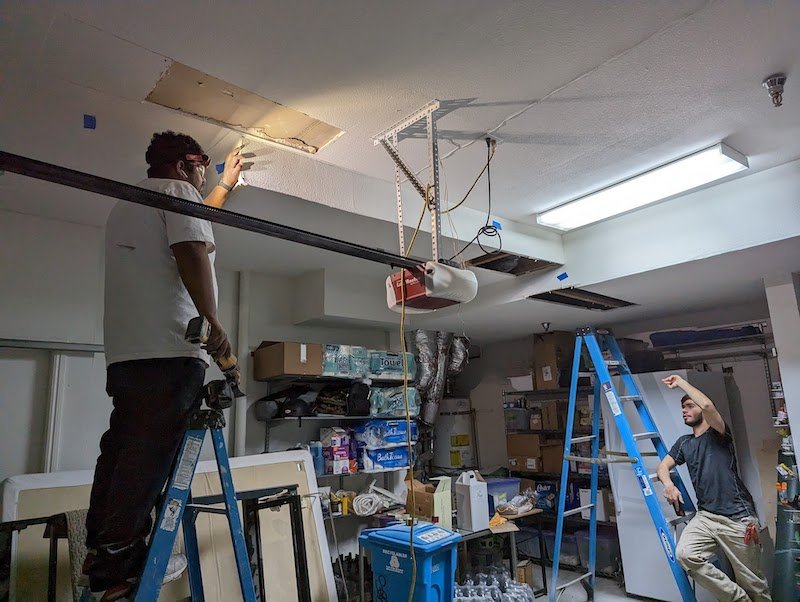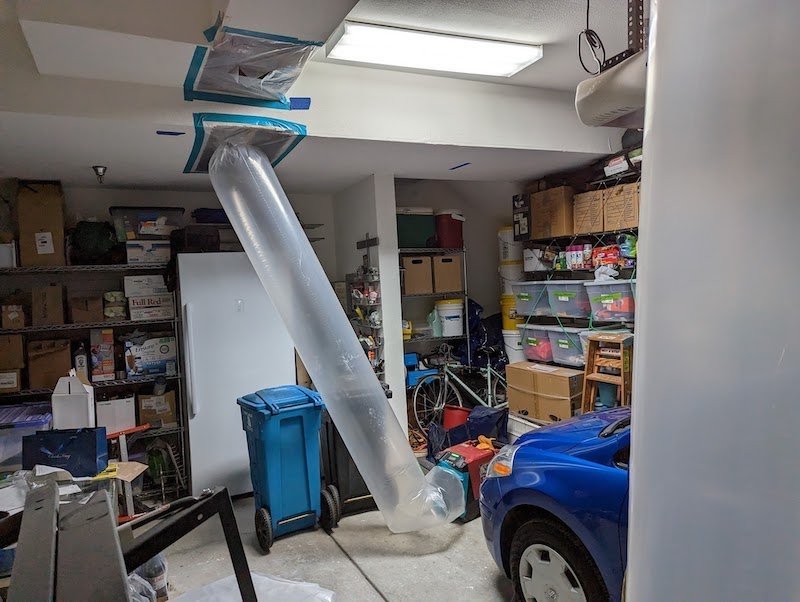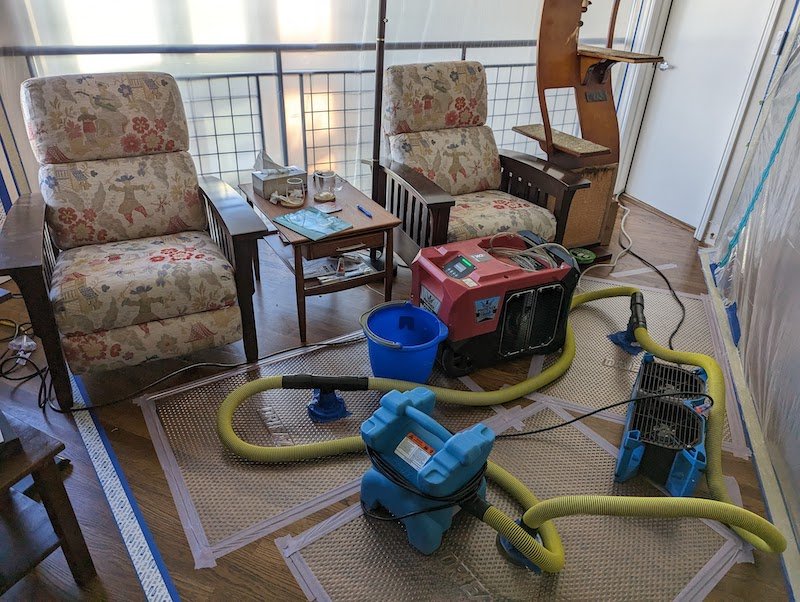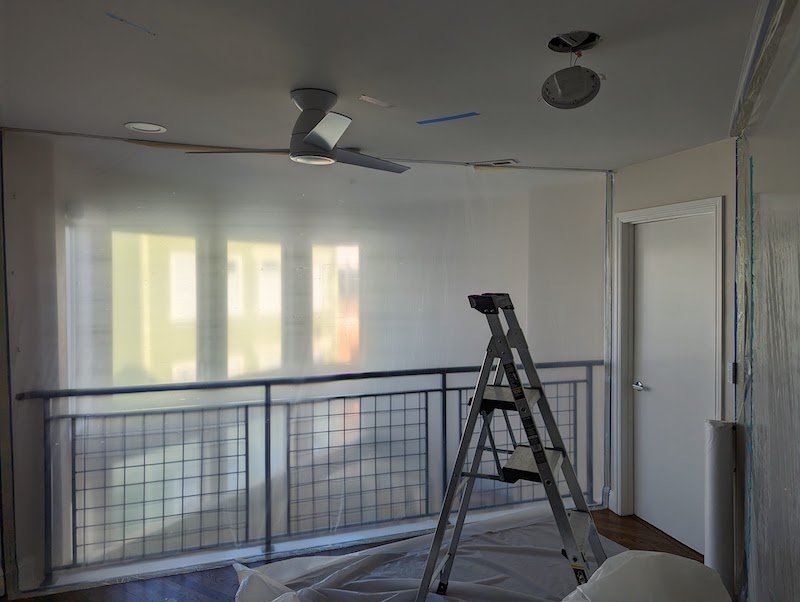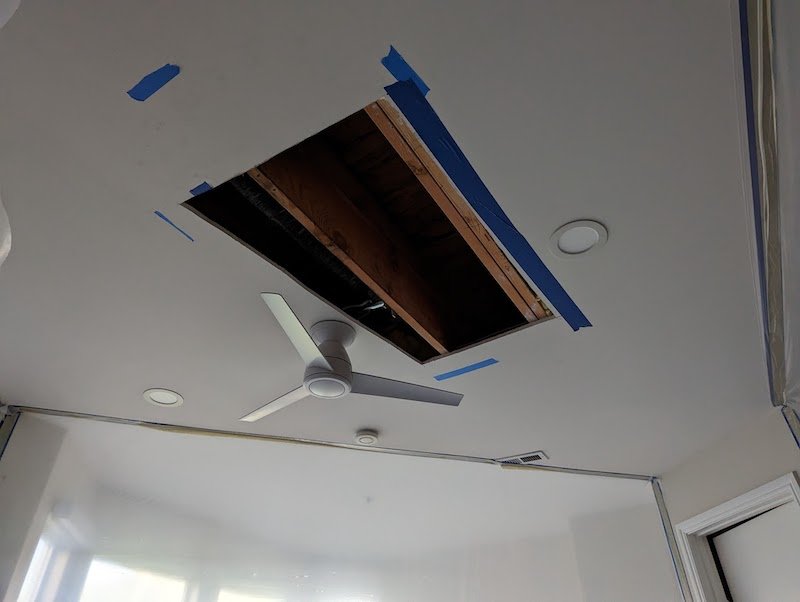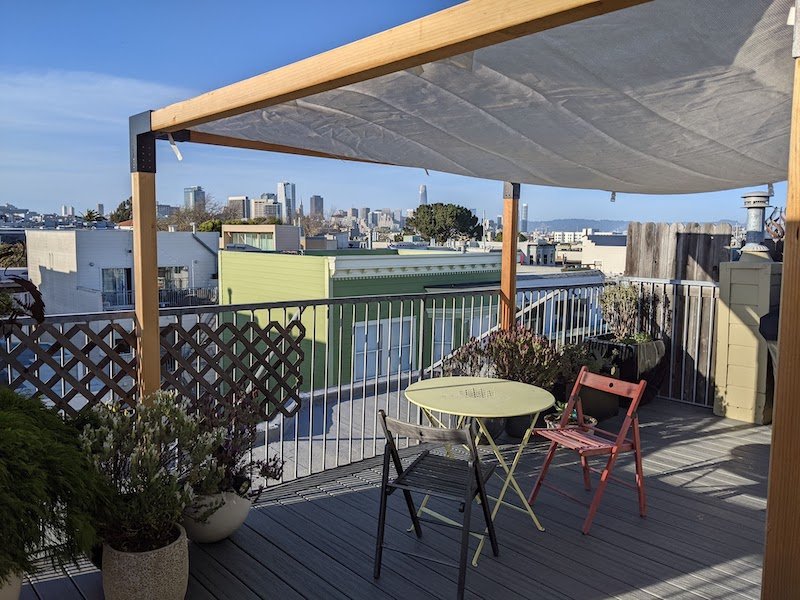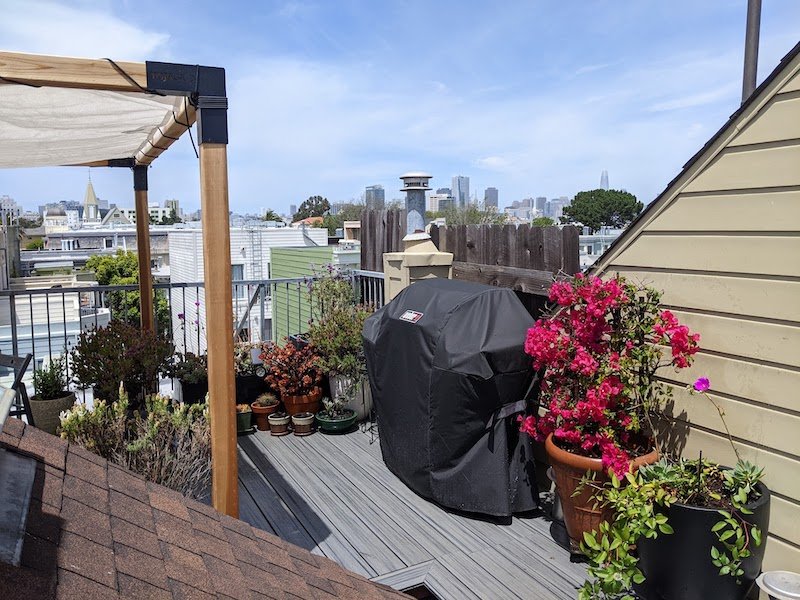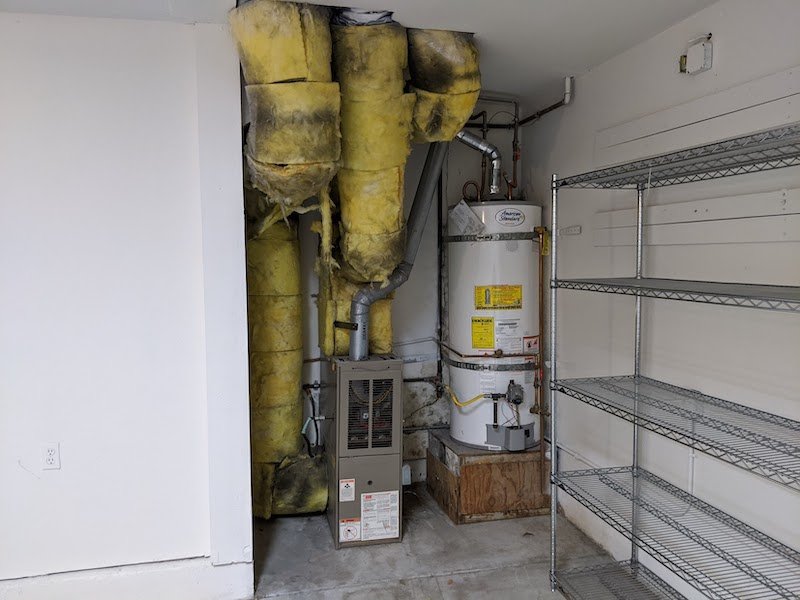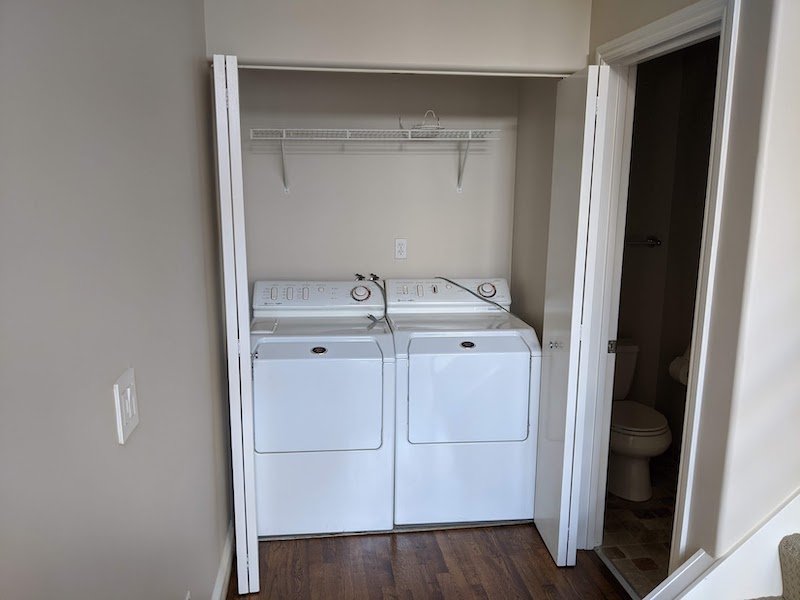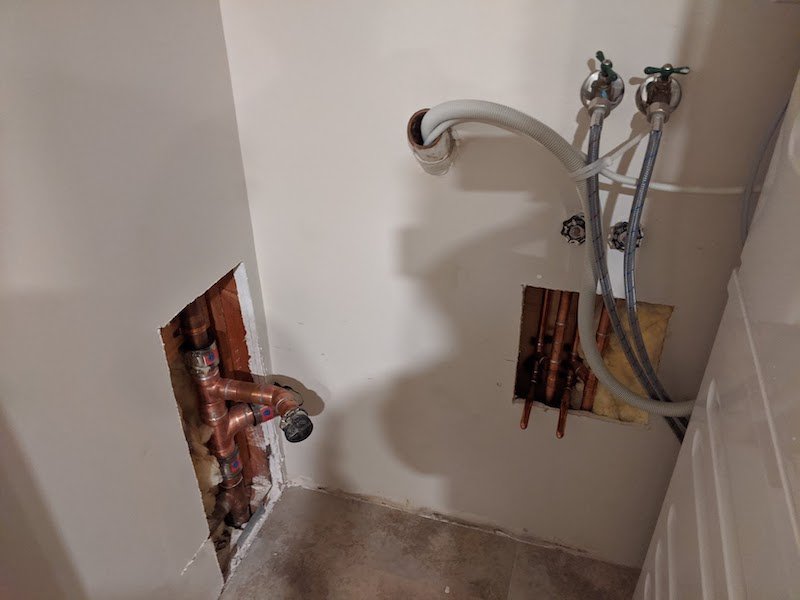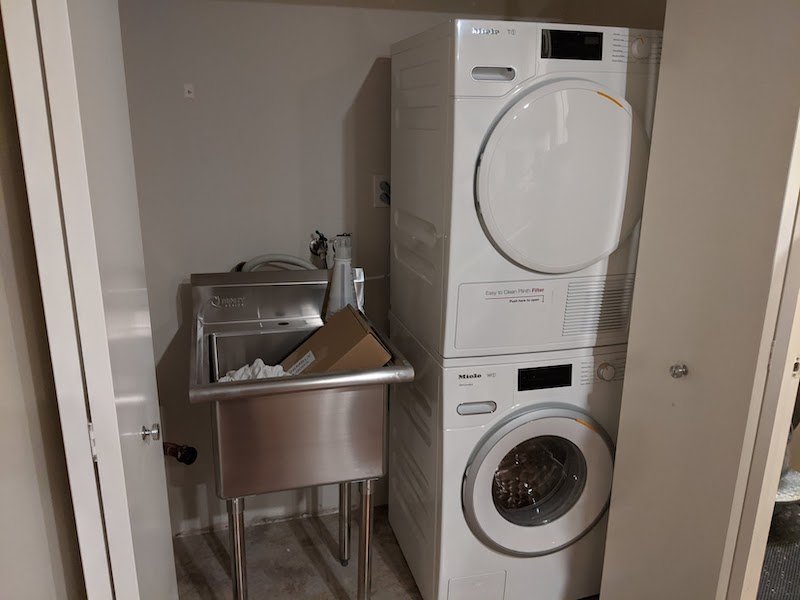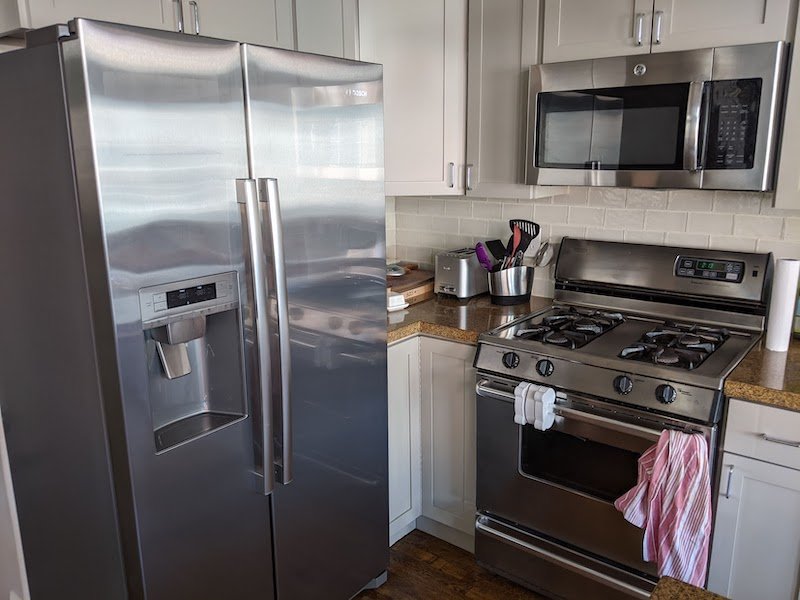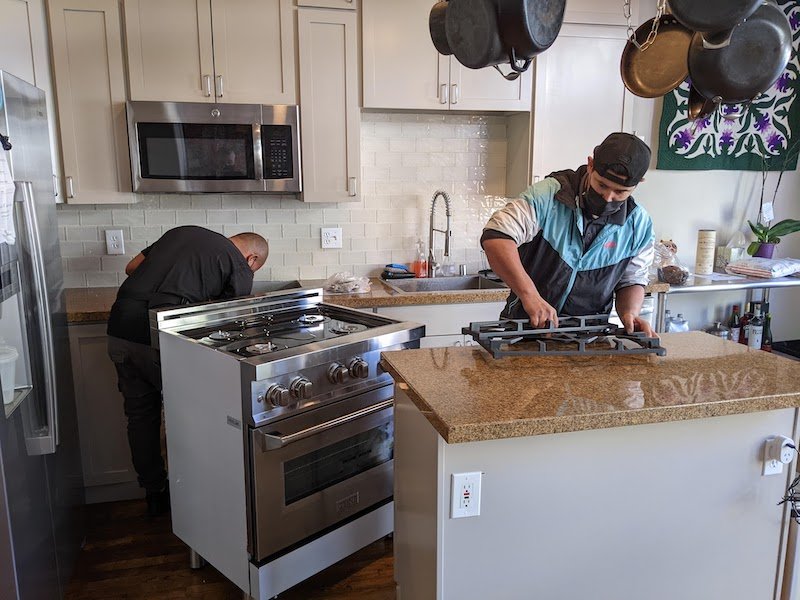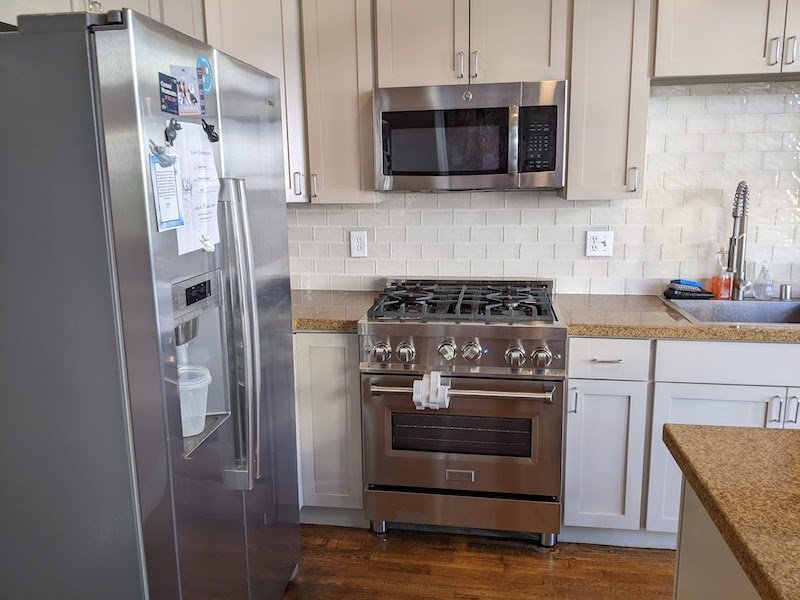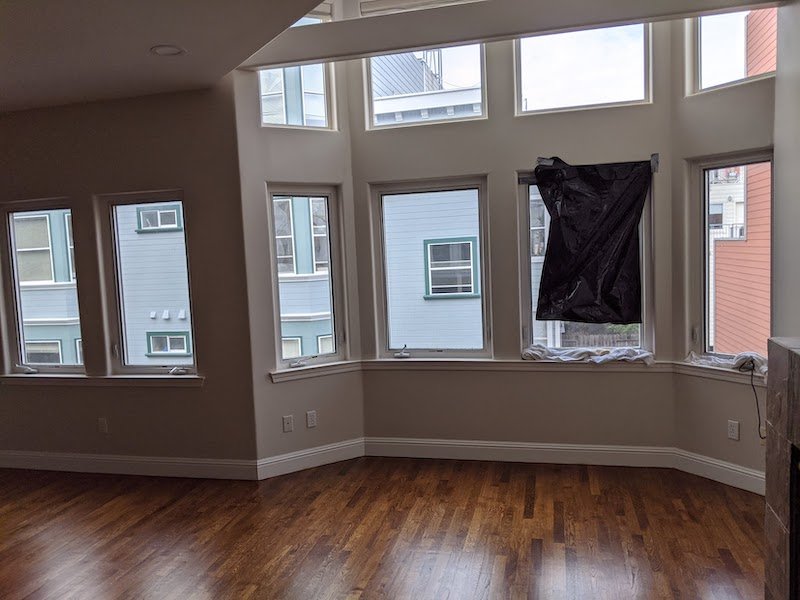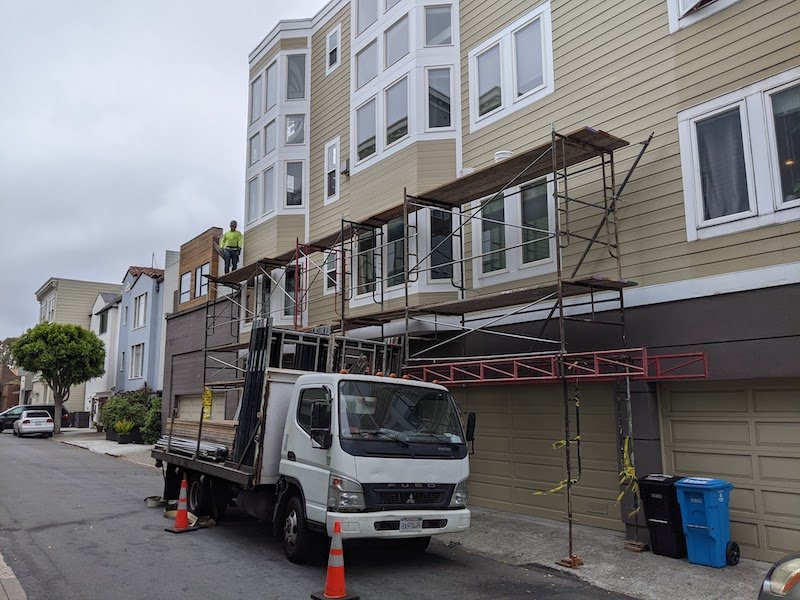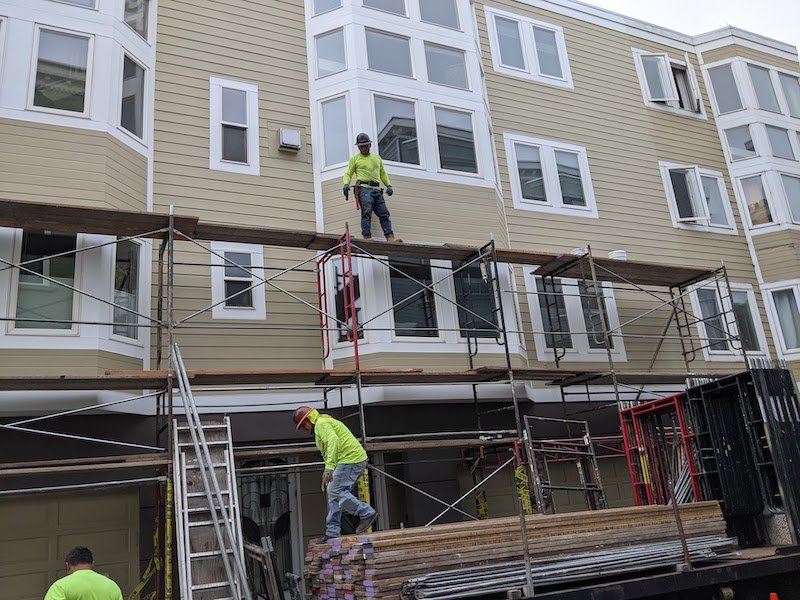Churn and Entropy
I just helped a friend get settled in a small hotel a couple of blocks away from her home. A steady cascade of maintenance problems has been unfolding for the past few weeks and she’s decided her place is now officially uninhabitable for the duration of the repairs. The roaring fire and Christmas decorations in the lobby helped adjust her mood as I carried her bags up to her room. A wee dram was also in order.
This was problem # 1. The upstairs bathroom developed a leak from a little piece of plastic pipe connector that failed. Water found its way down through the floor and into the cavities between the joists. From there it spread out over the ceiling below and through the light fixtures and into the living and dining room. Sections of drywall needed to be cut away to prevent mold from forming. Industrial fans and dehumidifiers were deployed. It was messy and an inconvenience, but all in all it was contained and manageable.
This happened just in time for Thanksgiving dinner. I’m a devout animist at moments like this. Our possessions have an intentional desire to self destruct at the least opportune times. Why else would these things always happen the day before a wedding, or right after you lose your job, or on New Year’s Eve? But I digress.
Here’s problem # 2. Ten days after the upstairs bath leaked, a pipe under the kitchen sink began to leak as well. It was eventually determined that when the place was originally built in 1998 the plumber missed a tiny spot of solder on one of the pipes. There had been a teeny tiny little drip inside the wall for the past 24 years. A small portion of the wall cavity and the subfloor under the kitchen cabinet had rotted out. This just happened to be the day the rest of the pipe finally gave way all at once.
My friend called me in a panic as water dripped down from the ceiling onto her bed on the floor below. I walked over and we placed buckets and towels to catch the drips until the plumber could arrive. The damage was limited and could be contained. This was another inconvenience, but not the end of the world. The remediation team that was already on the job managing the upstairs bath problem simply expanded their efforts into the kitchen and bedroom. The walls and ceiling were strategically opened up and additional dehumidifiers and fans were deployed.
In order to address the defective plumbing the lower kitchen cabinets needed to be pulled away from the wall. These cabinets were so water damaged they were going to have to be replaced. As the workers attempted to gently extract them, the stone countertops cracked. This is a can of worms. Getting exactly the same color and texture stone to match the other sections of counter is often impossible so the replacement process became a bit larger and more expensive. This was an irritation, but everyone rolled up their sleeves and got on with the work.
This brings us to Problem # 3. One of the junior apprentices who was charged with removing the rotten subfloor used a big reciprocating saw to cut through the wood rather than a more dainty tool. What he didn’t understand given his tender age and inexperience is that sometimes there are things inside of walls and floor cavities you can’t see. He accidentally cut into the fire sprinkler water supply line. An enormous rush of water poured out and worked its way through the property.
There was a mad scramble to the garage to turn off the master tap, but that did nothing to stop the flood. The fire suppression system is plumbed separately into the street main. The relevant valve is actually part of a parallel system that’s controlled from the street and is equipped with an electronic device to automatically alert the fire marshal. An entire contingent of fire engines arrived tout de suite.
What hadn’t already been damaged from the first two incidents became completely soaked from top to bottom. Side rooms that had previously been spared were added to the remediation efforts. Things that had been moved to the garage for safekeeping were drenched. You’d think that would be the end of this saga, but no…
Here’s problem # 4. San Francisco had the first really hard rain of winter and water began to trickle down through the ceiling of the top floor. Evidently the roof membrane wasn’t entirely watertight. The rainwater was absorbed by the fiberglass insulation in the ceiling, pooled up, then found a low point and soaked past the gypsum board.
Finding the exact origin of the roof leak will be tricky since there’s a deck on top of the membrane. Lifting up all the boards and sealing things up is going to be a serious undertaking.
My friend went through a series of emotions as each disaster struck. She’s a particularly pragmatic woman and she’s now reached a kind of détente with her home. Deep cleansing breaths. In with the good air. Out with the bad air. INNER PEACE said with gritted teeth. What choice does she have?
Here’s where I want to give you some backstory. My friend bought this property in January of 2020. The moment she moved in things began to fail. The water heater died immediately. She had taken the precaution of buying a special home warranty as part of the sale so the replacement of the water heater was covered. It took some arm wrestling with the people on the call center, but it was eventually taken care of. Within a month, the furnace also died. The insurance company initially had repairs done, but soon thereafter the furnace failed again - this time by catching fire and filling the house with smoke. It was eventually replaced begrudgingly by the insurers.
The moment she moved in she also discovered the clothes washer and dryer weren’t properly attached to the required plumbing and vent stacks. The laundry doors didn’t fully close since the space was a bit too tight to fit these specific appliances. She had a plumber open the walls and upgrade the old pipes. She bought new machines that fit the space better and added a utily sink.
The oven didn’t work at all and the burners on the cooktop were anemic. She replaced the stove along with the refrigerator which was too large for the space it was wedged into.
The first time we had a heavy rain that year the windows leaked. It wasn’t a little water. It was a lot. It all ran down the walls inside the house. This building is a four unit townhouse condominium and the skin of the property is the responsibility of the home owners association. There was a considerable amount of back and forth with the usual committee members, half of which were entirely unresponsive, the other half had no desire to spend money on anything ever. Push, pull, push, pull… She wrote a check and had the windows on her unit replaced. But that exposed the fact that the exterior siding had rotted out in places and needed to be replaced and painted.
What’s the lesson here? Is this about an unscrupulous builder who slapped up a shoddy building in 1998 and ran off with bags of money? I know that’s a tempting conclusion, but I honestly don’t think so. The builder was responding to institutional and societal imperatives. The land was expensive. The building materials were expensive. Labor was expensive. Municipal codes and regulations presented a highly constrained set of parameters. The larger culture insisted on certain things and forbid others. In the end, customers have a hard limit on what they’re willing to pay for. The building was as good as it needed to be and it lasted just long enough. Add a quarter of a century of passive neglect from the home owners association and this is the result.
My friend has the resources to bring this place back up to a fully functional standard. Insurance is covering some of the damage. The negligent repair company is covering the cost of the things they broke. And San Francisco is the kind of place where she can justify spending serious money because the demand for housing is high and there are plenty of solvent buyers. She can fight entropy and remain whole in the end. But the moment those things stop being true - here or anywhere - the decline sets in. Our places are only as durable as our willingness and ability to keep them up. The moment we decide it’s easier or more cost effective to move away, the rot takes over.
